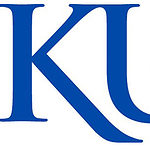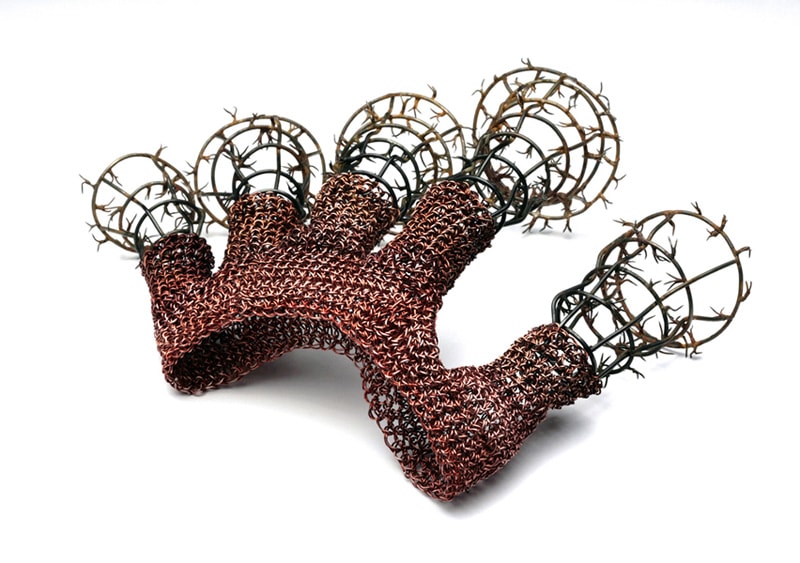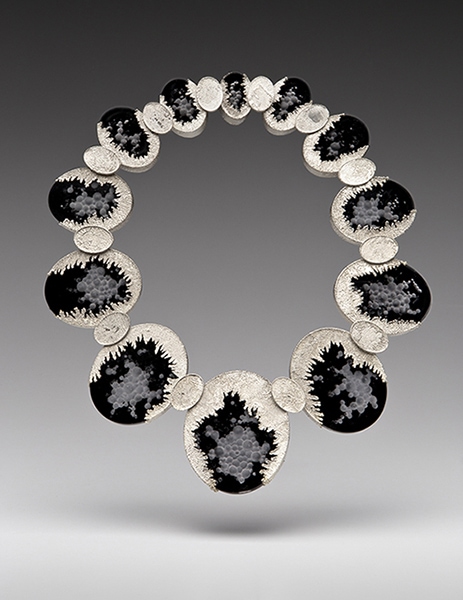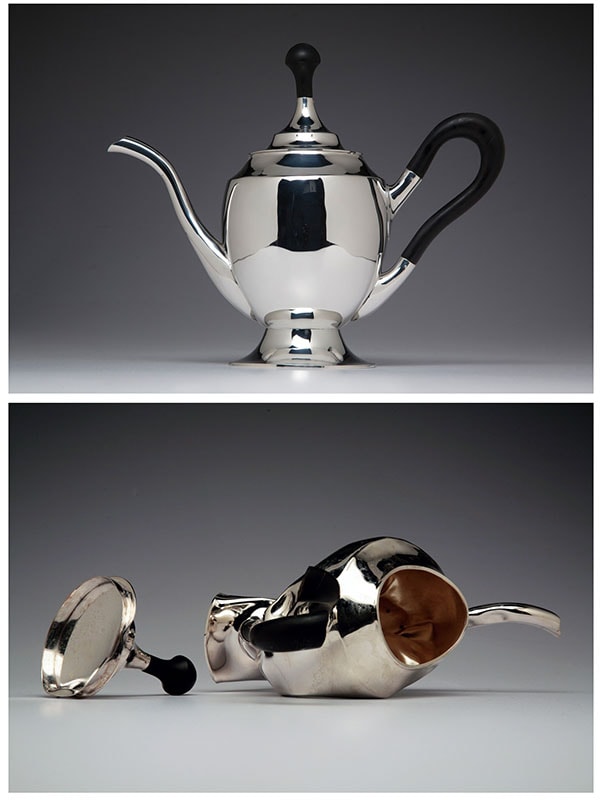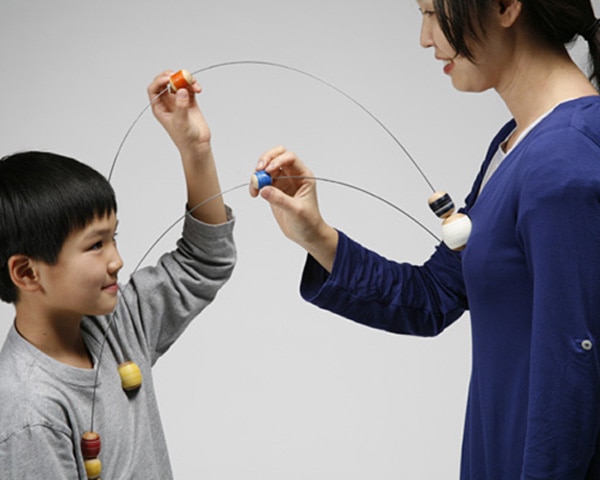Established in 1947, the University of Kansas has the distinction of having the oldest metalsmithing program at a public university in the United States.
Carlyle Smith, a participant in the first Handy & Harmon conference in 1947, was head of Kansas University’s metals program until 1977. Faculty in the metals program during Carlyle’s tenure included Klaus Kallenberger (1965–1966) Gary Nemchock (1971–1987) and Ollie Peter Vallane (1974–1994). A few notable alumni of the program include Margret Craver Withers, L. Brent Kington, Richard Mawdsley, Bob Ebendorf, Glenice Matthews, Bill Seeley, Heidi Schwegler, and Jack and Elizabeth Gualtiero of Zaffiro Jewelry.
Currently, Kansas University’s metalsmithing program has three full-time faculty—Jon Havener, Lin Stanionis, and Gina Westergard—and two adjunct faculty, Phil Voetsch, instructor of digital jewelry design, and Tom Tivol, instructor of gemological method.
Kansas University offers BFA and MFA degrees in metalsmithing and jewelry design. The BFA degree is 120 credit hours, 39 required hours in the major. The program is structured around concentrations in progressive skill building, intermixed with conceptual development and knowledge of the history of the discipline. Required courses in the major include introductory jewelry construction, casting, enameling, hollowware, advanced casting and construction, seminar, and professional practices. Recommended courses are gemological method and digital jewelry design I and II. These courses prepare students for their final two semesters of senior studio, where students develop an individual body of work culminating in a BFA exhibition. The BFA program prepares students for various professional directions in the jewelry industry and as independent artists/designers.
The MFA program in metalsmithing and jewelry design is a three-year course of study aimed at fostering the expression of each student’s personal artistic vision and potential through intellectual, critical, and cultural studies. Focusing on studio practice, program emphasis is placed on individual growth through independent work in an atmosphere of ongoing critical discussion. Enrollment in the program is limited, allowing students to work in a one-to-one relationship with faculty, who provide technical support, engage in critical dialogue, and offer feedback about work in progress. A weekly seminar for graduate students in all visual art disciplines serves as a forum for group critiques and allows for discussion of selected topics. As students progress through the program, they build a body of creative work based on historical and theoretical understandings specific to their goals and interests. To broaden this perspective, students are encouraged to study with faculty in other disciplines, thus developing a more inclusive approach to the metal arts. Graduate studies are enriched with an active visiting artist program of lectures and exhibitions supported through the Department of Visual Art and the Spencer Museum of Art.
The metalsmithing studio is a well-ventilated, state-of-the-art working environment. The facility includes eight interconnected rooms for hammer work, abrasives and finishing, enameling, undergraduate studios, and a student-operated supply store. Graduate students have their own studio space in a secure room, with access to the entire shop, which is well-equipped for a wide range of technical processes, from traditional hand to the digital. The studio has a large selection of hammers and stakes for smithing, a gas forge, TIG welder, power rolling mill, and deep draw hydraulic press. The studio maintains areas for copper electroforming, electroplating, aluminum anodizing, centrifugal and vacuum casting, resin casting, etching, and patinas. Metal spinning and lathes are located in the Art and Design Common Shop, and blacksmithing facilities are housed in an off-campus studio.
Studio facilities include a digital jewelry lab equipped with Gemvision Matrix and Rhino modeling software, Flamingo and V-Ray rendering programs, as well as access to other 3-D modeling software including Solid Works and Auto Cad. The software is supported with a new in-house Revo Milling machine.
In keeping with the university’s stature as a class I international research institution, Kansas University’s metalsmithing and jewelry program supports well-established study abroad exchanges for students and faculty with the Lahti School of Design in Finland and Kookmin University in Seoul, Korea. Further information is available on Kansas University’s School of the Arts website.
Staff
Jon Havener, Lin Stanionis, and Gina Westergard.
RECENT GRADUATES: If you recently received a degree–BA, BFA, MA, or MFA–from this university, everything you need to know to upload your graduate portfolio can be found at this link.
